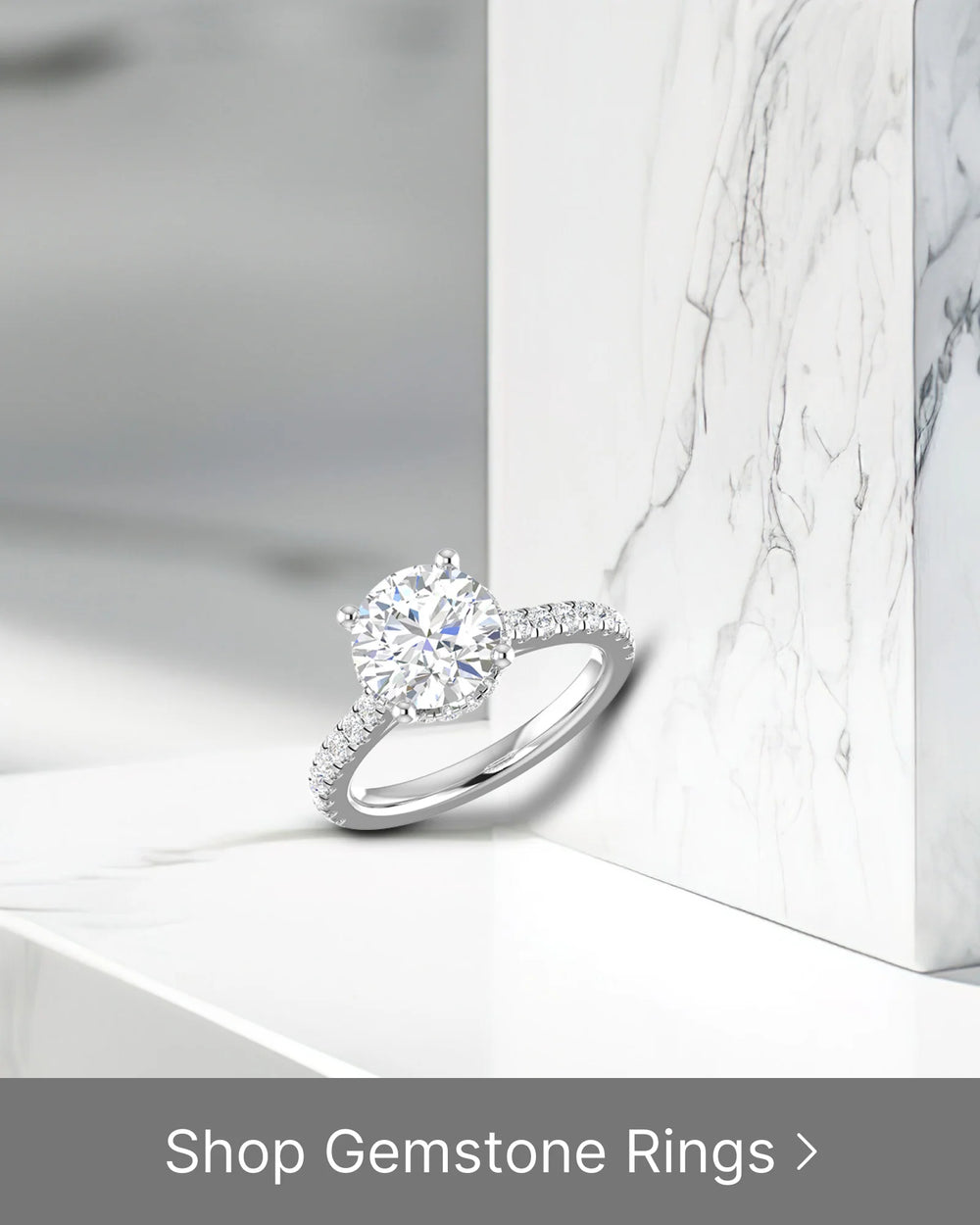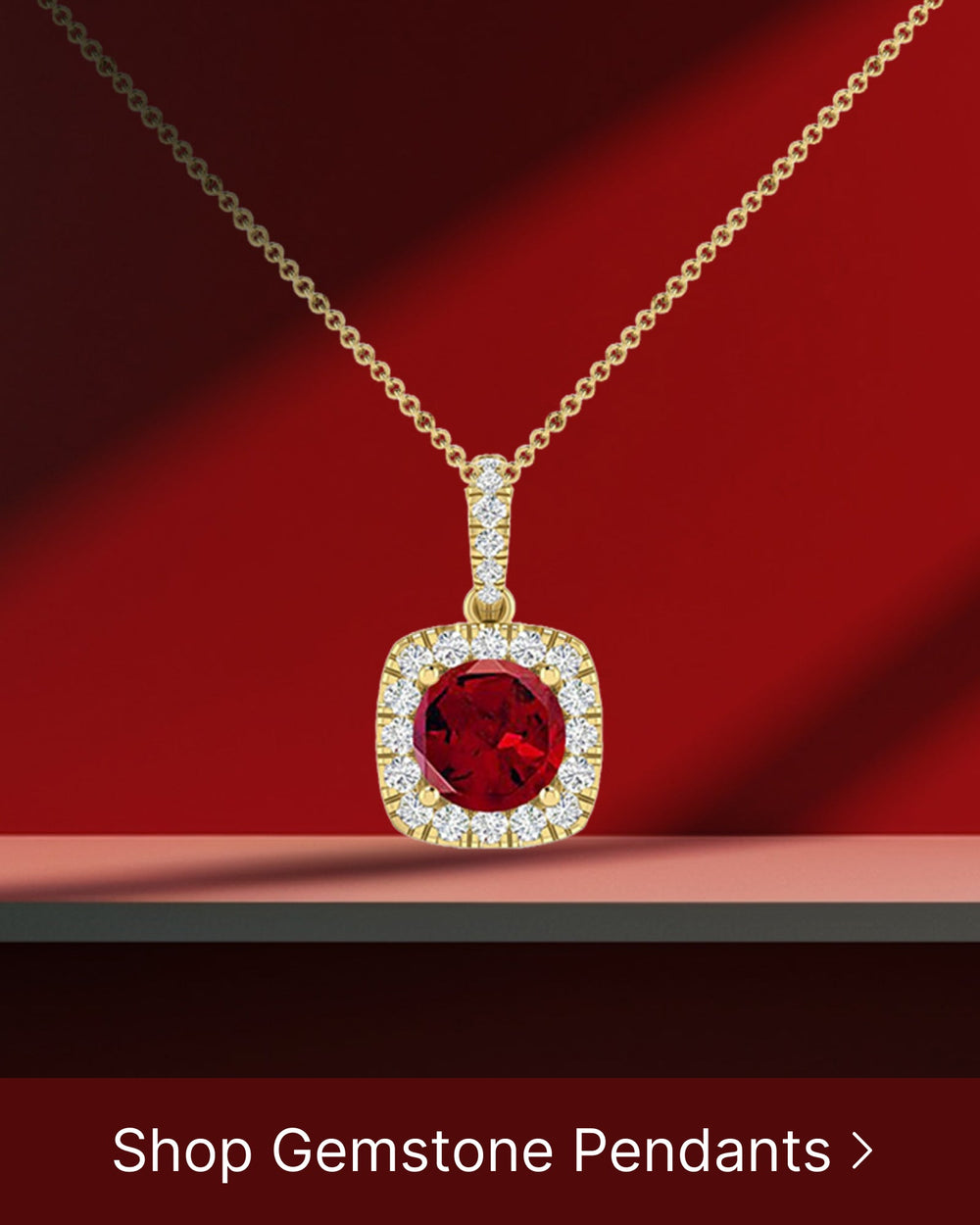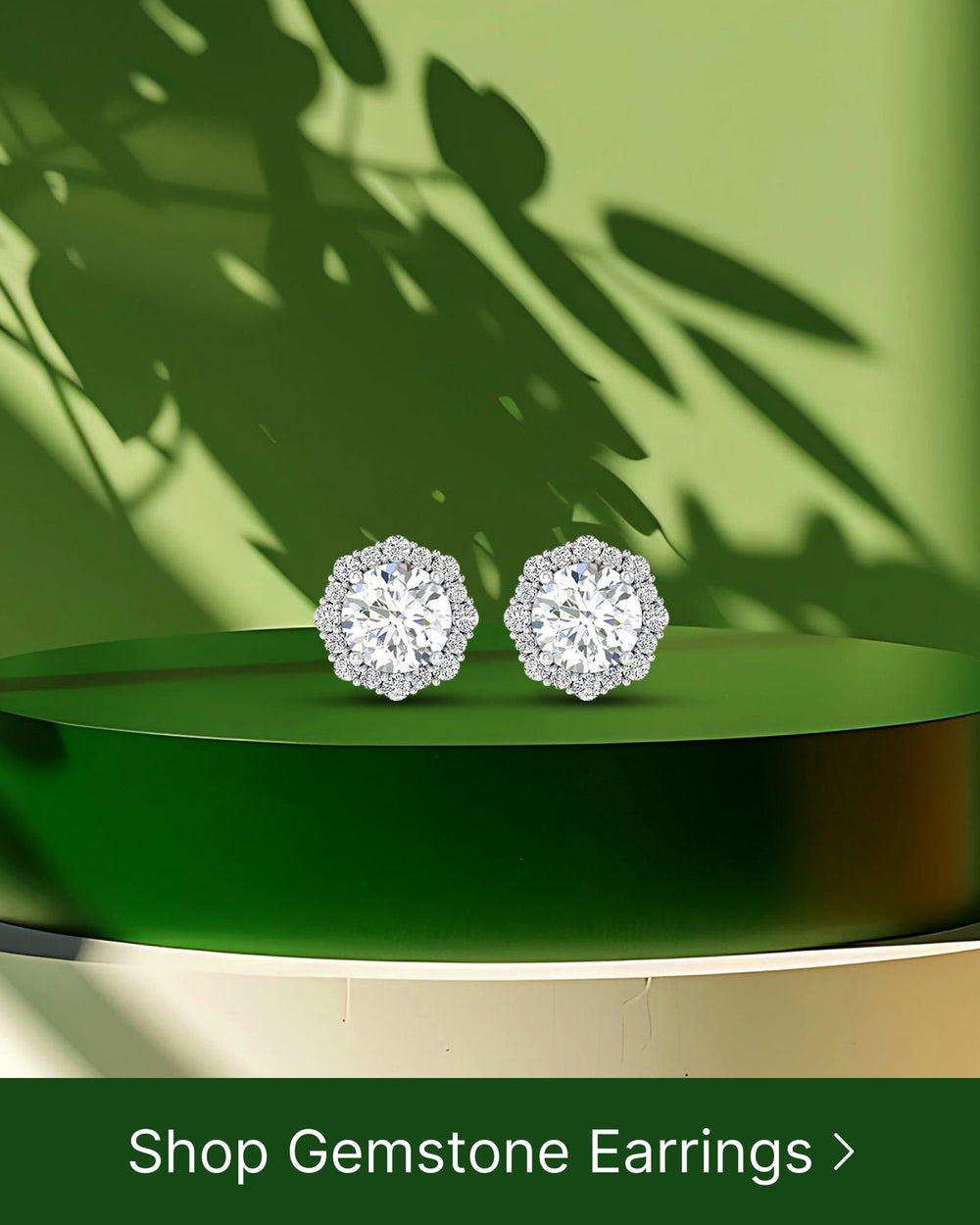Diamonds are some of the most precious and sought-after gemstones in the world. To understand their value and quality, it's essential to have a grasp of diamond grades and their significance. In this article, we'll delve into the basics of diamond grading, explore the role of diamond grading laboratories, discuss the importance of diamond grades in jewelry making, decipher diamond grading reports, examine the significance of diamond grades in the market, and provide valuable tips for buying graded diamonds.
The Basics of Diamond Grading
Diamond grading involves the evaluation of a diamond's characteristics to determine its quality and value. The evaluation is based on four main criteria known as the Four Cs: carat weight, color, clarity, and cut.
Carat weight measures the size of a diamond, with one carat equal to 200 milligrams. The weight of a diamond can greatly influence its value, as larger diamonds are generally rarer and more desirable. However, it's important to note that carat weight alone does not determine a diamond's quality.
Color grade refers to the presence of any color in a diamond. The Gemological Institute of America (GIA) grades diamonds on a scale from D (colorless) to Z (light yellow or brown). The less color a diamond has, the higher its grade and value. Colorless diamonds are highly sought after for their purity and brilliance.
Clarity grade assesses the presence of any flaws or blemishes within the diamond. These imperfections, known as inclusions, can affect a diamond's brilliance and overall appearance. The GIA grades clarity on a scale from Flawless (no inclusions or blemishes visible under 10x magnification) to Included (inclusions visible to the naked eye).
Cut grade refers to how well a diamond has been cut and shaped. The cut of a diamond greatly affects its brilliance and sparkle. A well-cut diamond reflects light internally and externally, creating a dazzling display of fire and brilliance. The GIA grades cut on a scale from Excellent to Poor, taking into account factors such as proportions, symmetry, and polish.
The Four Cs of Diamond Grading
Carat weight, color, clarity, and cut are all important factors to consider when evaluating a diamond's quality and value. Each of these criteria plays a significant role in determining a diamond's overall beauty and desirability.
When purchasing a diamond, it's essential to understand how the Four Cs interact with one another. For example, a diamond with a lower color grade may still appear colorless if it has a high clarity grade and an excellent cut. Similarly, a smaller diamond with exceptional color and clarity may be more valuable than a larger diamond with lower grades in these areas.
By considering the Four Cs together, diamond buyers can make informed decisions and find the perfect balance of characteristics that suit their preferences and budget.
The Role of Diamond Grading Laboratories
Diamond grading laboratories play a crucial role in the industry. They independently evaluate and assign grades to diamonds, providing an objective assessment of their quality and ensuring transparency.
One of the most reputable and widely recognized diamond grading laboratories is the Gemological Institute of America (GIA). Founded in 1931, the GIA is known for its rigorous grading standards and extensive research in gemology. Their grading reports, commonly referred to as GIA certificates, provide detailed information about a diamond's characteristics and are highly trusted in the diamond trade.
Another well-respected diamond grading laboratory is the American Gem Society (AGS). The AGS is known for its strict grading standards and focus on cut quality. They use a proprietary cut grading system that takes into account factors such as light performance, proportions, and craftsmanship.
When purchasing a diamond, it's advisable to look for a grading report from a reputable laboratory. This ensures that the diamond has been evaluated by experts and that its characteristics have been accurately assessed. It also provides a level of confidence and peace of mind for the buyer.
In addition to grading, diamond laboratories may also offer additional services such as diamond identification, laser inscription, and diamond education. These services further contribute to the overall integrity and trustworthiness of the diamond industry.
The Importance of Diamond Grades in Jewelry Making
When it comes to creating exquisite diamond jewelry, the grades of the diamonds used play a significant role. Not only do diamond grades directly impact the value of a diamond, but they also affect its appearance, making it a crucial factor to consider in the jewelry making process.
Influence on Diamond's Value
Diamond grades directly impact the value of a diamond. Higher-grade diamonds, with larger carat weights, better color grades, higher clarity, and superior cut grades, are more valuable and sought after in the market. The carat weight of a diamond is a measure of its size, with larger carat weights being more desirable. Color grades determine the presence of any tint in the diamond, with higher color grades indicating a more colorless stone. Clarity grades refer to the presence of any internal or external flaws, with higher clarity grades indicating a diamond with fewer imperfections. Lastly, cut grades determine the quality of the diamond's cut, which affects its brilliance and overall appearance. Diamonds with superior cut grades reflect light more effectively, resulting in a more dazzling and valuable gemstone.
Impact on Diamond's Appearance
Diamond grades also affect a diamond's appearance. Higher cut grades enhance a diamond's brilliance and sparkle, making it more visually appealing. The cut of a diamond refers to the angles and proportions of its facets, which directly influence how light is reflected and refracted within the stone. A well-cut diamond will maximize the amount of light that enters and exits the stone, creating a mesmerizing display of brilliance and fire. On the other hand, a poorly cut diamond may appear dull and lifeless, diminishing its overall beauty.
Optimal clarity grades ensure minimal interruptions to light reflections within the diamond, further enhancing its overall beauty. Diamonds with higher clarity grades have fewer inclusions or blemishes, which are internal or external flaws that can affect the passage of light through the stone. A diamond with excellent clarity will allow light to pass through without obstruction, resulting in a more radiant and captivating gem.
Moreover, the color grade of a diamond can significantly impact its appearance. Colorless diamonds are highly valued for their pure and transparent nature, allowing them to reflect light in a way that showcases their brilliance. On the other hand, diamonds with lower color grades may exhibit a yellow or brownish tint, which can detract from their overall beauty. By selecting diamonds with higher color grades, jewelry makers can ensure that their creations shine with a captivating and vibrant allure.
In conclusion, diamond grades play a crucial role in the world of jewelry making. They not only determine the value of a diamond but also influence its appearance. By understanding the significance of diamond grades and carefully selecting stones with superior grades, jewelry makers can create stunning and valuable pieces that are sure to captivate the hearts of those who wear them.
Deciphering Diamond Grading Reports
Diamond grading reports provide detailed information about a diamond's quality and characteristics. Understanding these reports is essential when purchasing a diamond.
When it comes to buying a diamond, it's not just about the sparkle and shine. The quality and value of a diamond are determined by a variety of factors, and that's where diamond grading reports come in. These reports, also known as diamond certificates, provide a comprehensive analysis of a diamond's characteristics, including its carat weight, color, clarity, and cut.
But understanding these reports can be a daunting task for those who are not familiar with the terminology and grading scales used. That's why it's important to educate yourself about the different aspects of diamond grading reports before making a purchase.
Understanding Diamond Grading Scales
The grading scales used in diamond reports can vary depending on the laboratory. Familiarizing yourself with these scales and the corresponding grades is crucial to comprehend the report's information accurately.
One of the most commonly used grading scales is the GIA (Gemological Institute of America) scale, which grades diamonds on a scale from D to Z. A diamond with a grade of D is considered colorless, while a diamond with a grade of Z has a noticeable yellow or brown tint. Understanding this scale can help you determine the color grade of a diamond and its impact on its overall appearance.
Another important grading scale is the clarity scale, which assesses the presence of any internal or external flaws, known as inclusions and blemishes, respectively. The clarity scale ranges from Flawless (no inclusions or blemishes visible under 10x magnification) to Included (inclusions and/or blemishes visible to the naked eye). Knowing the clarity grade of a diamond can give you insight into its purity and value.
Furthermore, it's worth noting that different laboratories may use different grading scales and terminology. For example, the AGS (American Gem Society) uses a different cut grading scale, which includes grades such as Ideal, Excellent, Very Good, Good, Fair, and Poor. Familiarizing yourself with the specific grading scales used by different laboratories can help you make more informed decisions when purchasing a diamond.
Interpreting Diamond Cut Grades
The cut grade of a diamond reflects its proportions and overall craftsmanship. It's vital to understand the different cut grades and their impact on a diamond's appearance before making a purchase.
When we talk about the cut of a diamond, we're not referring to its shape (such as round, princess, or emerald), but rather how well it has been cut and shaped by a skilled diamond cutter. The cut grade assesses the diamond's ability to reflect light, its symmetry, and its overall beauty.
There are several cut grades used in diamond grading reports, ranging from Excellent to Poor. An Excellent cut diamond is known for its exceptional brilliance and fire, as it reflects light in a way that maximizes its sparkle. On the other hand, a Poor cut diamond may appear dull and lifeless, as it fails to reflect light effectively.
Understanding the different cut grades can help you choose a diamond that not only fits your budget but also meets your expectations in terms of brilliance and overall appearance. It's important to note that a diamond's cut grade can significantly impact its value, so it's worth considering this aspect carefully when making a purchase.
When it comes to deciphering diamond grading reports, knowledge is power. By understanding the grading scales and cut grades used in these reports, you can make more informed decisions when purchasing a diamond, ensuring that you get the best value for your money.
The Significance of Diamond Grades in the Market
Diamond grades have a profound influence on the diamond market and its pricing.
How Diamond Grades Affect Price
Diamonds with higher grades command higher prices in the market. The rarity of diamonds with exceptional grades contributes to their increased value, making them more desirable for investment or personal ownership.
The Role of Diamond Grades in Investment
Investors often consider diamond grades when making investment decisions. High-grade diamonds often retain their value well, making them a potential store of wealth.
Tips for Buying Graded Diamonds
Buying graded diamonds can be an exciting venture, but it's essential to make informed decisions.
What to Look for in a Diamond Grading Report
When purchasing a graded diamond, a detailed and reputable grading report is crucial. Ensure the report includes accurate information regarding the Four Cs, along with any additional certifications or characteristics specific to the diamond.
The Balance between Diamond Grade and Budget
Finally, it's important to strike a balance between diamond grade and budget. While higher-grade diamonds are desirable, it's crucial to consider your budget and personal preferences when making a purchase.
In conclusion, understanding diamond grades and their significance is key to making informed decisions when buying or investing in diamonds. By grasping the basics of diamond grading, deciphering grading reports, and considering the importance of grades in the market, you can navigate the world of diamonds with confidence and find the perfect gem to add to your collection or create exquisite jewelry.






